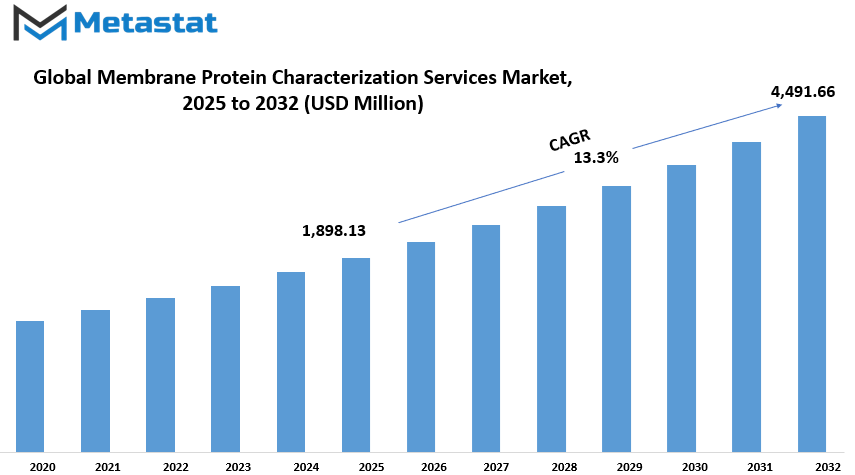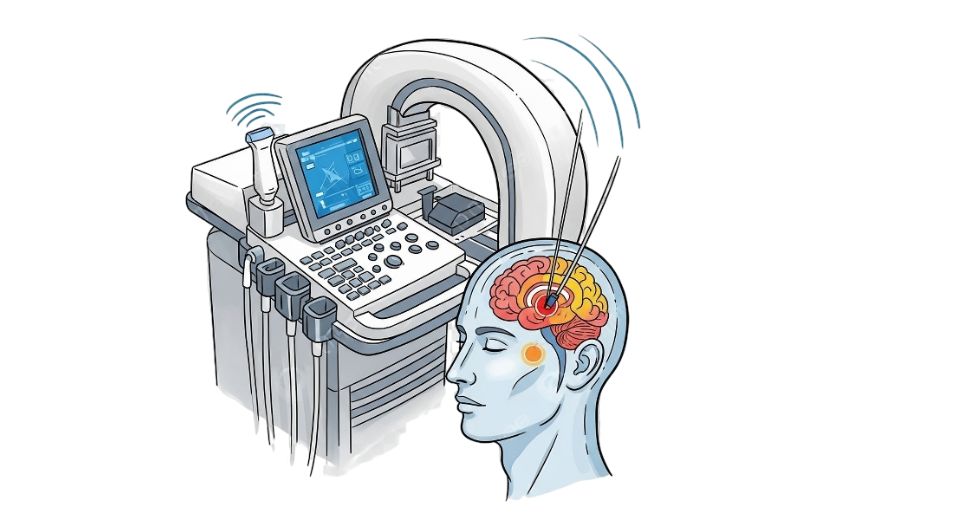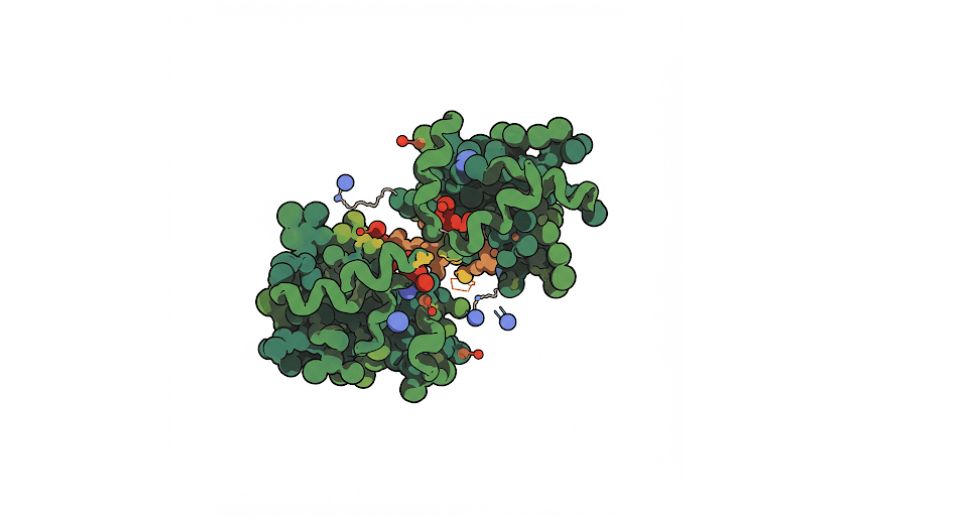MARKET OVERVIEW
The Global Membrane Protein Characterization Services Market will pioneer the future of molecular biology and drug discovery. Membrane proteins are regarded as immensely important targets in the pharmaceutical industry due to their role in different cellular processes; hence, they are receiving increasing attention from all fronts of biomedical research. Within precision medicines and biologics, further evolution will require very detailed characterization of membrane proteins, and this market will serve as a bridge for pharmaceutical manufacturers, academicians, and firms in biotechnology. Membrane Protein Characterization Services will focus mainly on structural, functional, and interaction membrane protein analyses - all of which relate directly to new therapeutic design and increased efficiencies in existing therapies.
With the growth of the Global Membrane Protein Characterization Services market, New methods and new techniques have built a new vista concerning the study of membrane proteins. The most cutting-edge techniques, such as cryo-Electron Microscopy (cryo-EM), Mass Spectrometry, and highly advanced computational methodologies, will be the backbone for investigating practically very accurately and in detail the whole panorama of membrane protein properties. These methods will increase the depth of research into protein folding, dynamics, and mechanisms, which have major implications at the level of molecular insight into diseases.
Besides, the continuing development of methods of stabilizing membrane proteins outside their native environments will pose one big challenge to the market. Membrane proteins have lengthy been considered tricky and almost impossible to study due to their amphipathic nature; ingeniously crafted solutions are required to extract, purify, and analyze them while retaining their functional properties. The extraction techniques for membrane proteins will undergo advancements in this market, providing ample high-quality protein samples for research in the future.
As expected, it will make all services even more sophisticated and able to handle multiple dimensions of data, continued induced demand on the other hand through increasing complexity in biological organisms. The very hallmark of such doubling would be a complete integration of proteomics, genomics, and metabolomics with the characterization of membrane proteins toward drawing a more holistic view of their probable roles in cellular processes. Unlocking this knowledge could expose how the multidimensional framework presents itself in molecular mechanisms behind complex ailments such as cancer, neurodegeneration, or autoimmune disorders.
The Global Membrane Protein Characterization Services market will be transitioning into personalized medicine. Once researchers have an understanding of how individual membrane proteins are involved in specific diseases, highly targeted therapies will begin to be developed. Extremely refined membrane protein characterization will provide a significant input into the design of such personalized medicines.
Global Membrane Protein Characterization Services market is estimated to reach $4,491.66 Million by 2032; growing at a CAGR of 13.3% from 2025 to 2032.

GROWTH FACTORS
The global membrane protein characterization services market is witnessing ample growth globally due to various factors. Targeted drug discovery came out as one of the major driving factors, which has increased the demand for membrane proteins because of their importance in several cellular processes that are required for increasingly precise and effective treatments. Due to the rising reliance on membrane proteins in most of the cases, there will be an increased demand for such services in the analysis and characterization of membrane proteins, which helps in understanding disease mechanisms and can serve as important targets for the identification of drug candidates.
In addition to that, enhancements in proteomics and analytical technologies are serving the increased market. Proteomics is taking leaps in progress lately, resulting in techniques for analyzing proteins much more finitely and accurately. With the use of better analytical devices, researchers can study membrane proteins more easily and identify newer candidates for drug development and comprehend their actions within the human body. Thus, research is accelerating, and there will be new, innovative therapeutic approaches in the future that will be developed by expanding the base of puccal membrane protein characterization services, pausing the demand.
However, several constraints are limiting the full potential of this market. One of the biggest challenges is that the techniques and extremely expensive cost of instrumentation and services are common to being faced all over the world. The equipment for membrane protein analysis can be quite costly, making it prohibitive to penetrate such laboratories and organizations with limited budgets; these services are thus denied access by smaller-scale research laboratories and institutions because of budget restrictions.
Another input that affects the market is technical difficulty in purifying and stabilizing membrane proteins. Membrane proteins are, by nature, very complex structures intrinsically interacting with lipid membranes, which renders them obscure to work with. The purification of these classes of proteins must be done under conditions that stabilize them; this is a complex procedure that requires specialized skills and equipment. These technical hindrances have led to a slowdown in the growth of the market because many research labs are unwilling or unable to surmount these hurdles in their research endeavors.
Nevertheless, it still carries many opportunities that these service providers may harness. One of these possibilities is at the emerging biotech firms in developing regions. As these firms grow and expand, they will need very sophisticated services for protein analysis, thus providing commercial prospects for providers in the international market. Development and incorporation of artificial intelligence and automation in protein characterization will also herald a bright future for the industry. AI-based tools and automated systems in the protein characterization process can improve efficiency and accuracy compared to the traditional methods and create new avenues for innovative solutions and various opportunities in the market.
MARKET SEGMENTATION
By Membrane Protein Type
The Global Membrane Protein Characterization Services market is receiving increasing attention as researchers and companies seek better methods to study and understand proteins fundamental for several biological functions. Membrane proteins are primarily involved in how cells communicate with each other and the environment and manage their internal processes. The timeline of their characteristics would thus be of utmost importance from a new drug development angle, as well as understanding the maladies and diagnostics. Being integrated into the cell membranes, membrane proteins are seldom encountered in other states of proteins and thus make their studies more intricate. As a consequence, the demand for specialized membrane protein-resolving services has steadily risen.
Within this market, the Membrane Protein Type segment includes G Protein-coupled Receptors, Ion Channels, and Membrane Receptors. Of these, G Protein-coupled Receptors dominate with $827.88 million. Many biological processes use these receptors, which are highly sought-after targets in drug development, making them one of the most studied types of membrane proteins. With the ability to detect molecules outside the cell and activate intracellular responses, they occupy research areas such as neuroscience, cardiology, and cancer. The Ion Channels and Membrane Receptors also contribute important functions in the transport of ions across cell membranes and signaling, thereby being vital to a number of body functions.
As medicinal and biotechnology companies implicate more attention into drug discovery and precision medicine, it demands immediate impact for though investigations of membrane proteins. This urges collaboration between research and private service companies who survey membrane proteins. Improvements in other facets-aided technologies like cryo-electron microscopy and protein labeling strategy-that can help characterize protein structure and function in detail also play their role in favor of this growing field. This promises more accuracy and faster development of therapeutic interventions.
In summary, the Global Membrane Protein Characterization Services market continues to be a growing one, because as the medical and scientific communities recognize the importance of the role these proteins play in life, G Protein-coupled Receptors will be at the forefront of effort and interest, and technological advancements shall increasingly push the boundaries of discovery. All these factors indicate that this market holds strong potential for researchers and investors that want to foster innovation in healthcare and life sciences.
By Service Type
The Global Membrane Protein Characterization Services Market Growths due to the increasing demand for extensive analysis of these important biological molecules, which serve as important targets for the development of drugs. According to the function of membrane proteins, they have taken part in the areas of signal transmission, transport, and communication between cells. Therefore, characterization is highly valuable for academia and pharmacy, considering the complicated nature of membrane proteins and the difficulties in working with them due to their structures and behaviors in natural environments. Hence, specialized services become necessary to carry out proper analysis.
By Service Type, the market gets segmented into Structural Analysis, Functional Assays, Protein-Protein Interaction Analysis, Binding Kinetics and Affinity Testing, and Mass Spectrometry Services. Structural Analysis enlightens the researchers regarding the shape and arrangement of the membrane protein, which is very important in leading toward the development of more efficacious treatments targeted toward them. Functional Assays reveal the behavior of these proteins under various conditions and thus will lead to the understanding of their roles in health and disease. Protein-Protein Interaction Analysis would recognize how inbound membrane proteins build unique connections with other molecules. Most diseases are associated with aberrant connections. The Binding Kinetics and Affinity Testing would thus measure the strength and the rapidity of binding of a membrane protein with other molecules such as drugs or natural ligands, which aids the improvement of drug design. Mass Spectrometry Services would characterize membrane proteins regarding their composition and relative amounts with great accuracy. This would be especially useful while dealing with very complex biological samples.
This is the rising trend in these services owing to the demands from researchers and pharmaceutical companies who would like to accelerate discovering new therapies. Advances in technology have enabled the study of these complexly structured proteins making it easier to understand and later superior therapy development. Such advanced approaches and company services are now increasingly available to researchers around the world.
Personalized medicine and targeted therapies increase the demand for the detailed characterization of membrane proteins. The way patient responses develop to specific treatments depends on knowledge of how these membrane proteins work. Advanced services have also equipped scientists to discover new drug targets and evaluate the effectiveness of the discovery before introducing them to the market with safer and more efficient treatments.
In a nutshell, due to the increased need for evaluation with respect to speed, accuracy, and low cost in research and clinical that continues to grow, the Global Membrane Protein Characterization Services Market is expected to grow continuously.
By Application Membrane Protein
It is forecasted that the Global Membrane Protein Characterization Services market will grow steadily owing to an increasing demand for it among several sectors. Membrane proteins are translated in a variety of biological processes and are often targets in several medicines and research studies. The deeper the science goes, the demand for an accurate and reliable way to study these proteins increases. The drug discovery and development application is among the major areas where this market is growing. Pharmaceutical companies rely on membrane protein characterization to offer information about how potential drugs interact with these proteins. It helps pharmaceutical companies develop more effective drugs with fewer side effects. This is extremely important as membrane proteins are responsible for transporting things into and out of cells, hence they directly impact how a drug behaves.
Another important area is the engineering of proteins; this consists of alteration of the molecule to achieve better functioning or stability. Membrane protein characterization ensures that any alterations are beneficial. The available tools and services will allow the more sophisticated adjustment of protein structures to provide better therapeutic proteins or enzymes. Of course, these services will affect other areas, such as clinical diagnosis. The better understanding of membrane proteins will allow clinicians to diagnose diseases more efficiently and quickly, thus providing earlier intervention and more individualized treatment plans for patients.
Yet another emerging area of application is in vitro diagnosis. Here, the biological samples are defined as blood or tissue and then used for diagnosing conditions without any causing invasiveness. By digressing membrane proteins within these samples, doctors can identify problems that may affect people's health in their early ages. This not only improves outcomes for patients but also minimizes costs to the health sector over time. Studies on membrane proteins are relevant to the making of vaccines. Most vaccines are intended to stimulate immune responses to target specific proteins found on the surface of either viruses or bacteria. Increasingly detailed information about such proteins will be useful to the scientists in constructing ever better and safer vaccines.
Finally, as this segment relates to market antibody development, antibodies are designed to recognize specific proteins, including those in membranes, with an emphasis on characterizing those targets. This allows researchers to develop treatment for autoimmune diseases, cancer, and other serious illnesses. As all these applications continue to grow, the same will be the case for membrane protein characterization services. The future of the market looks promising, with opportunities to support innovation in medicine and research through better tools and knowledge in this field.
By End User
Major end-users of the membrane protein characterization resources globally are the biotechnology and pharmaceutical industry, research- and academic-based institutions, and diagnostic laboratories. Each of these sectors depends on the membrane protein characterization, but the purposes are interconnected for which these all play a major role in the direction and growth of the market.
Biotechnology and pharmaceutical companies are some of the largest users of the services in this field. These bodies need to understand membrane proteins for the creation of new drugs and improvements in existing ones. Membrane proteins often form targets for drug discovery due to their surface localization on the cells, where they serve the important functions of communication, transport, and signaling. Studying these proteins, therefore, provides scientists with an idea of how chemically cells respond, which knowledge forms the basis of being able to compose drugs that are effective and safe. With the increasing demand for personalized medicine, these companies are expected to employ more advanced tools and services that can deliver a much higher level of detailed analysis on proteins.
Research and academic institutes also have a share in the market. Such institutions concern themselves with learning more about how membrane proteins function in general. Their work would probably form the future basis even for discoveries made later on in medicine and biology. While not often directly engaged in drug development, their studies usually make findings that later are applied by pharmaceutical companies. Their need for quality and accurate data encourages the use of professional characterization services, especially when working on complicated proteins that are difficult to study by standard methods in the lab.
Membrane protein characterization is the basis for disease diagnosis and monitoring by diagnostic laboratories. Certain diseases, for example, cancer or genetic disorders, may be recognized as associated with changed activity or morphological features of membrane proteins. Identifying such changes can help doctors in their treatment plans. These include much of the work that diagnostic laboratories tend to be able to do in biomarker identification for the specific signs in the body indicative of a disease. As assays based on biomarkers increase, the latter is likely to find a larger space in diagnostics for protein analysis.
To sum things up, important stakeholders in fostering demand for membrane protein characterization services are the biotechnology and pharmaceutical industry, research and academic institutions, and diagnostic laboratories. Efforts towards understanding membrane proteins and thus developing better healthcare solutions can thus help the market grow innovatively for some time to come.
|
Forecast Period |
2025-2032 |
|
Market Size in 2025 |
$1,898.13 million |
|
Market Size by 2032 |
$4,491.66 Million |
|
Growth Rate from 2025 to 2032 |
13.3% |
|
Base Year |
2024 |
|
Regions Covered |
North America, Europe, Asia-Pacific, South America, Middle East & Africa |
REGIONAL ANALYSIS
Researching the global Membrane Protein Characterization Services market involves splitting it into several geographical regions: North America, Europe, Asia-Pacific, South America, and the Middle East & Africa. North America includes the U. S., Canada, and Mexico. The region is characterized by an advanced healthcare infrastructure and ongoing research, leading to a substantial demand for membrane protein characterization services. The U.S. ranks highest in private and public funding, thus being the leader in innovation and technology application related to the field.
In Europe: UK, Germany, France, Italy, and Rest of Europe make up the market. These nations are well populated with the pharmaceutical companies and research institutes working in the area of understanding membrane proteins. Life sciences research is being supported by governments and organizations in Europe as well, thereby boosting the growth of these services. The major contributors have been Germany and UK in the scientific domain, which have also proved their governments supported biotechnology startups and labs.
Moving westwards into Asia Pacific, the region encompasses the countries India, China, Japan, South Korea, and Rest of Asia Pacific. This was the fastest developing area, on account of the biotechnology and the pharmaceutical industry development. In China and India, research infrastructures are being developed; but Japan and South Korea have many high-tech companies and research centers. Additionally, they have also raised the awareness of membrane proteins for drug discovery and disease diagnosis, thus, contributing to development within the region.
In South America, we have Brazil, Argentina, and the Rest of South America. Developing market under this region comprises Brazil, the leading country in terms of research activities and investments in health care. It has been noted that compared to other areas, the growth is slow but becoming promising once marginal attention is diverted to health and medical research and biotechnology.
Middle East & Africa is divided into the GCC Countries, Egypt, South Africa, and the Rest of the Middle East & Africa. Though this area currently contributes a minimal proportion of the global market, it has been on a gradual growth path. Improved healthcare infrastructures and government schemes to encourage scientific research are setting the stage for opportunities for membrane protein characterization services.

COMPETITIVE PLAYERS
Taking pharmaceutical and biotechnology companies toward the treatment discovery against membrane proteins, the Global Market of Membrane Protein Characterization Services attracted increasing attention. Membrane proteins are biologically active and are responsible for a range of activities simultaneous to signaling, transport, and cell-to-cell interactions, linking their information in drug discovery and drug development. Characterization is the study of these proteins, which can be cumbersome because of their complex nature and inability to be studied in their natural habitat. Nevertheless, the advent of techniques and technologies has been a great path for these endeavors.
Characterization of membrane proteins is the study that deals with the identification of structure, function, and interaction of such proteins. Being embedded in the phospholipidic environment of cell membranes makes it complicated to uproot and analyze those proteins. Then came the specialized services that exist to provide tailored solutions for the study of membrane proteins. This is a set of services particularly useful for the time- and cost-conscious companies hoping to achieve accurate results. Demands for the services tend to, however, incur competition among the service providers to remain upgraded with the latest technologies providing more reliable, trustworthy, and rapid results.
The major companies operating in the field include Charles River Laboratories, Creative Proteomics, Creative Biostructure, BIBioSci, Cube Biotech GmbH, Sino Biological, Inc., Integral Molecular, Bio-Rad Laboratories, and Sygnature Discovery Ltd. Each of these possesses certain expertise and can apply a variety of tools and technologies to various subclasses of membrane proteins. Some companies focus primarily on structural analysis, while others perform service applications in protein expression, purification, and binding studies. They are instrumental in helping researchers understand the workings of these proteins and their potential utility for therapeutic development.
Thus, increasing funding for medical research and demand growth for personalized medicine will sustain the growth of this market. This will be further enhanced as many researchers continue to explore newer targets for treatment of human diseases involving membrane proteins. With the recent advancements made in mass spectrometry, cryo-electron microscopy, and other techniques, the characterization of these proteins is set to gain momentum, powered by innovations in the field, the urgent need for biologics, and the capabilities of key players that have been powering the development of this market for the next few years.
Membrane Protein Characterization Services Market Key Segments:
By Membrane Protein Type
- G Protein-coupled Receptors
- Ion Channels
- Membrane Receptors
By Service Type
- Structural Analysis
- Functional Assays
- Protein-Protein Interaction Analysis
- Binding Kinetics and Affinity Testing
- Mass Spectrometry Services
By Application Membrane Protein
- Drug Discovery & Development
- Protein Engineering
- Clinical Diagnosis
- In Vitro Diagnosis
- Vaccine Development
- Antibody Development
By End User
- Biotechnology & Pharmaceutical Industry
- Research & Academic Institutes
- Diagnosis Laboratories
Key Global Membrane Protein Characterization Services Industry Players
- Charles River Laboratories
- Creative Proteomics
- Creative Biostructure
- Eurofins Scientific
- Alfa Chemistry
- Cube Biotech GmbH
- Sino Biological, Inc.
- Integral Molecular
- Bio-Rad Laboratories
- Sygnature Discovery Ltd
WHAT REPORT PROVIDES
- Full in-depth analysis of the parent Industry
- Important changes in market and its dynamics
- Segmentation details of the market
- Former, on-going, and projected market analysis in terms of volume and value
- Assessment of niche industry developments
- Market share analysis
- Key strategies of major players
- Emerging segments and regional growth potential








 US: +1 3023308252
US: +1 3023308252






